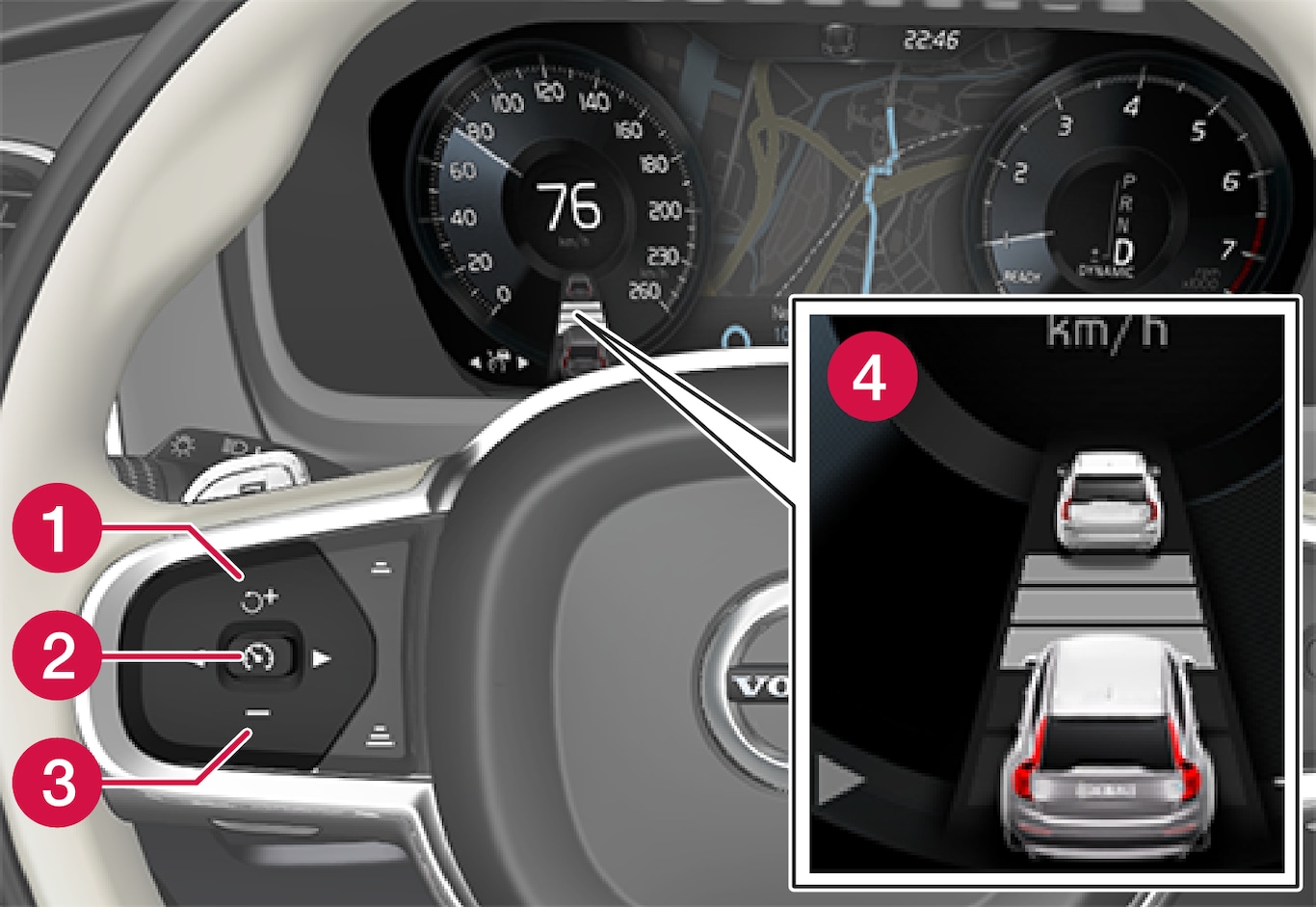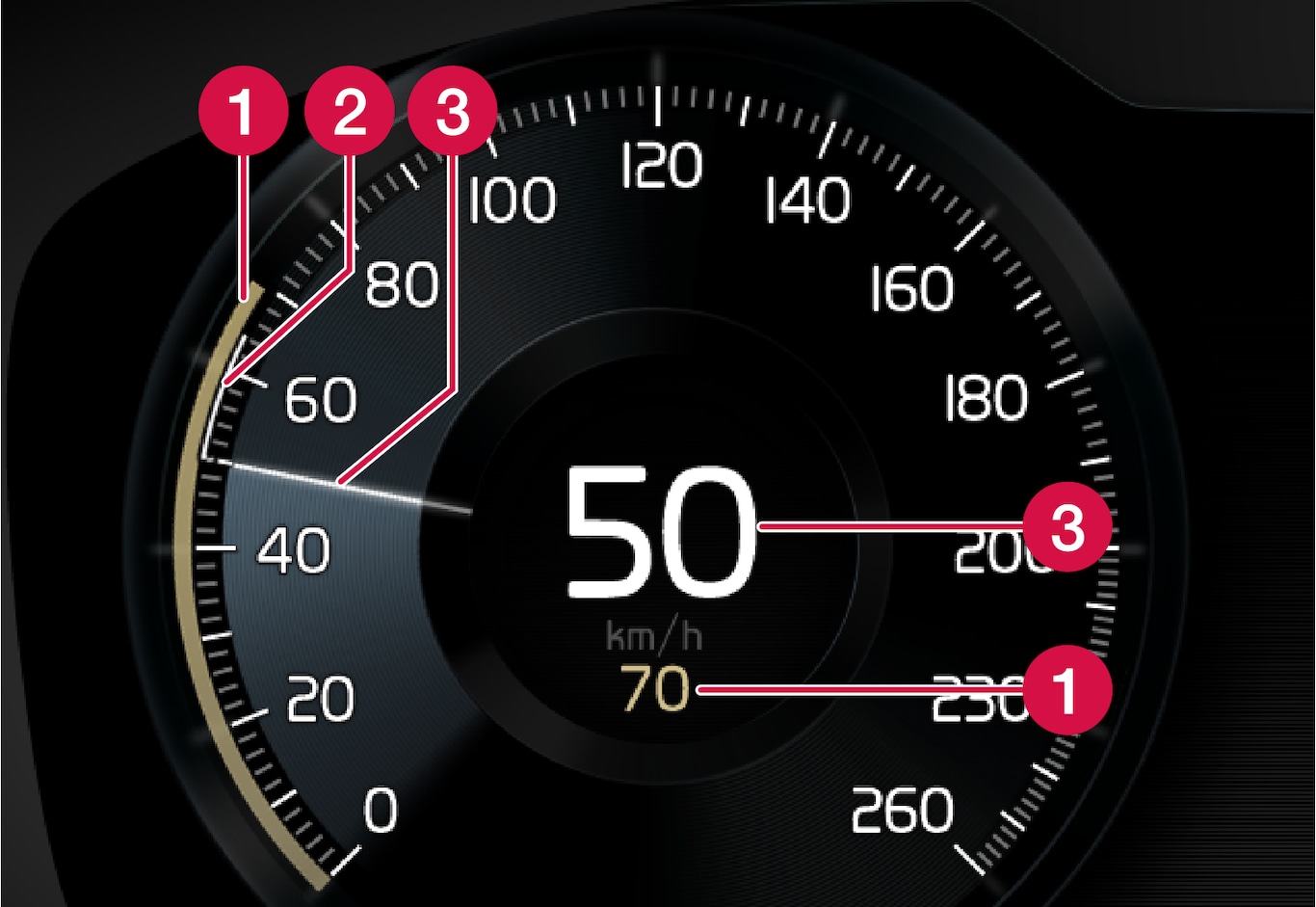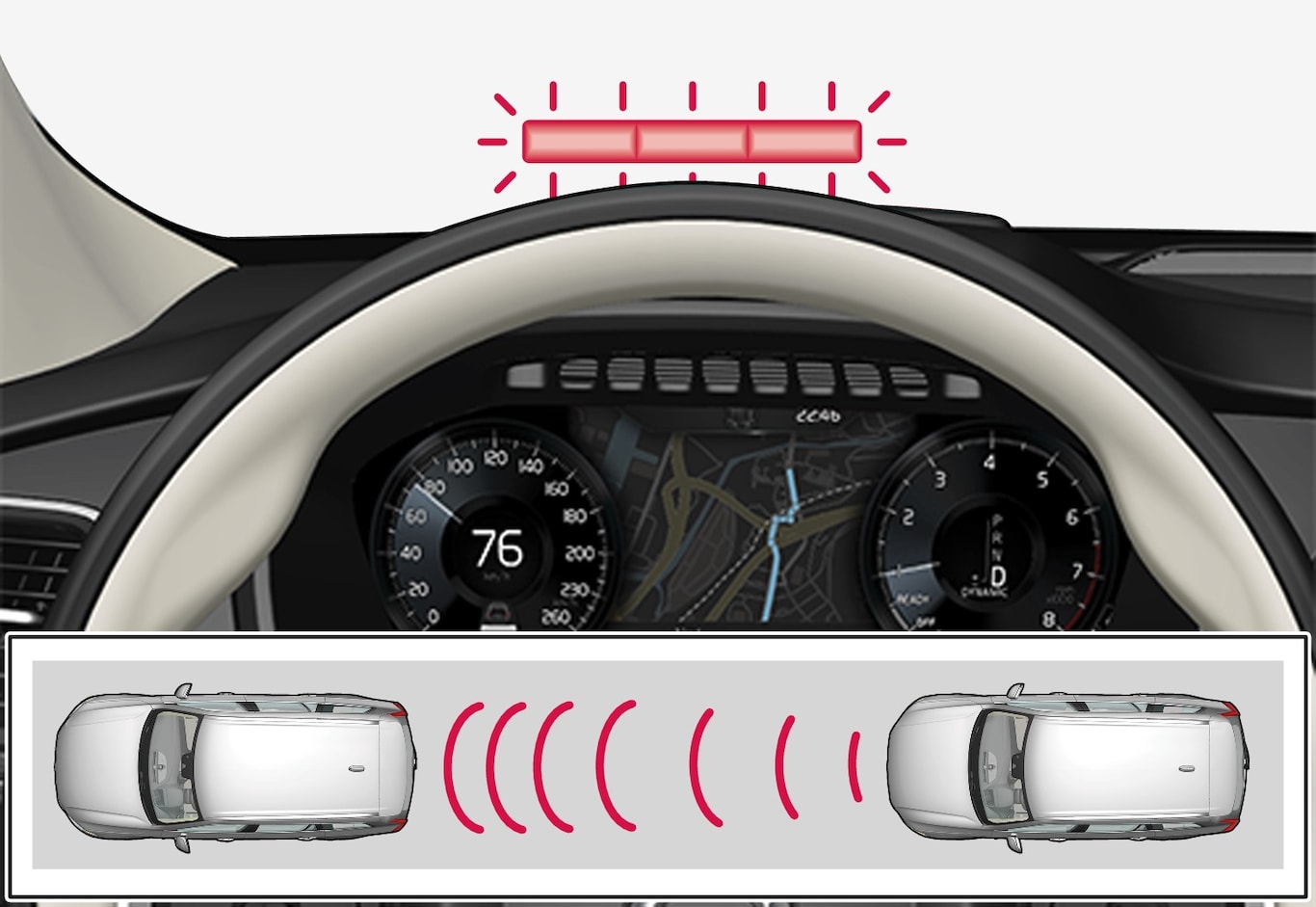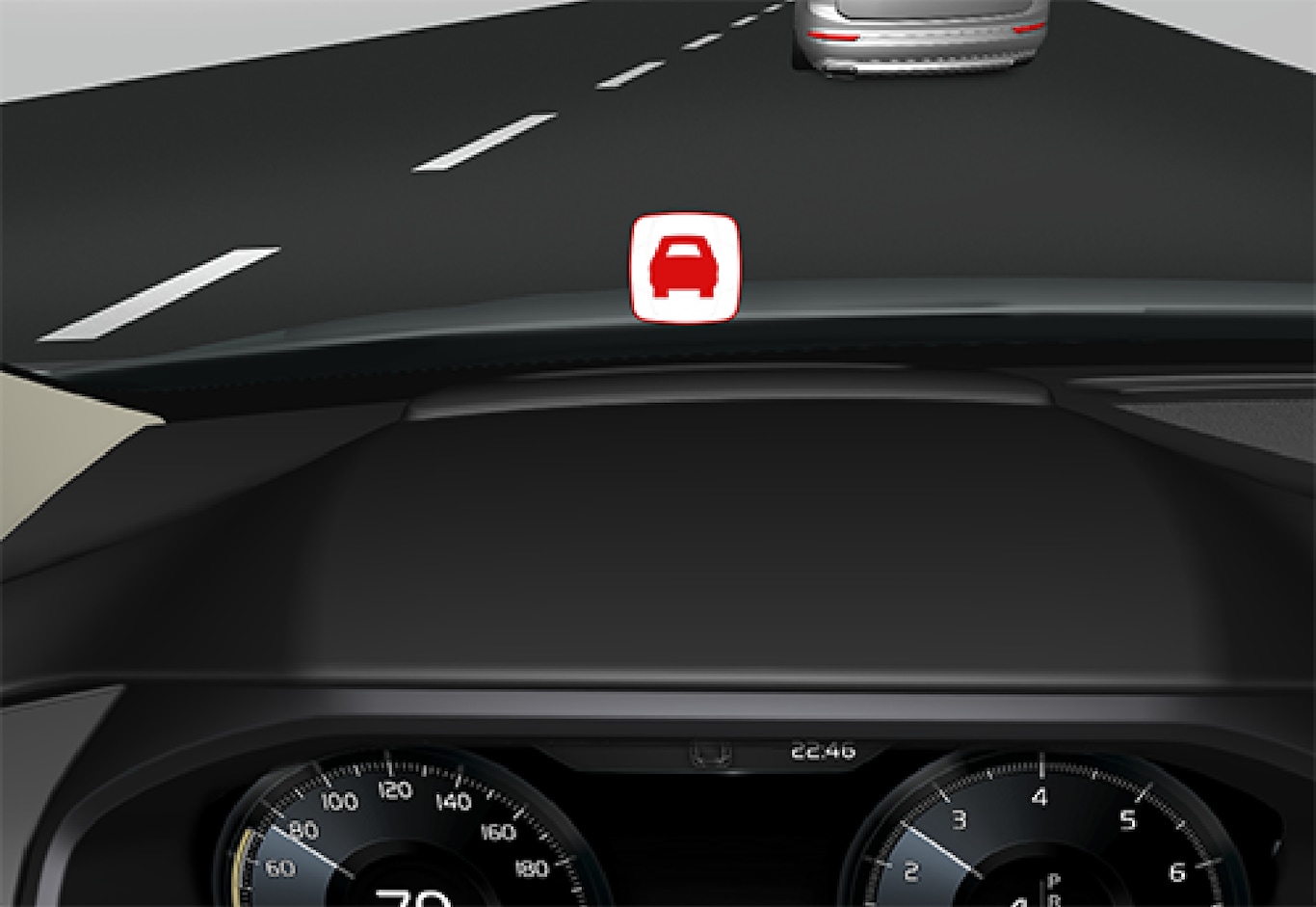Adaptive cruise control*
An adaptive cruise control provides a more relaxing driving experience on long journeys on motorways and long straight main roads in smooth traffic flows.
The driver sets the desired speed and time interval to the car in front. When the camera and radar unit detects a slower vehicle in front of the car, the speed is automatically adapted to that. When the road is clear again the car returns to the selected speed.
Warning
The driver must always be observant with regard to the prevailing traffic conditions and intervene when the adaptive cruise control is not maintaining a suitable speed or suitable distance.
The adaptive cruise control cannot handle all traffic, weather and road conditions.
Read all the sections about the adaptive cruise control in the owner's manual in order to learn about its limitations, of which the driver should be aware before the function is used.
The driver always bears responsibility for maintaining the correct distance and speed, even when the adaptive cruise control is being used.
Important
The distance to the vehicle ahead is measured by radar. The cruise control function regulates the speed by accelerating and braking. It is normal for the brakes to emit a low sound when they are being used by the adaptive cruise control.
The adaptive cruise control aims to follow the vehicle ahead in the same lane at a time interval set by the driver. If the radar unit cannot see any vehicle in front then the car will instead maintain the speed set and stored by the driver. This also takes place if the speed of the vehicle in front exceeds the stored speed.
The adaptive cruise control aims to control the speed in a smooth way. In situations that demand sudden braking the driver must brake himself/herself. This applies in case of large speed differences or if the vehicle in front brakes suddenly. Due to the limitations of the radar unit, braking may come unexpectedly or not at all.
Adaptive Cruise Control can follow another vehicle at speeds from 0 km/h up to 200 km/h (125 mph).
Warning
Adaptive cruise control is not a collision avoidance system. The driver must intervene if the system does not detect a vehicle in front.
The adaptive cruise control does not brake for humans or animals, and not for small vehicles such as bicycles and motorcycles. Nor for low trailers, oncoming, slow or stationary vehicles and objects.
Do not use the Adaptive cruise control, for example, in city traffic, at junctions, on slippery surfaces, with a lot of water or slush on the road, in heavy rain/snow, in poor visibility, on winding roads or on slip roads.
Overview
Controls

 Increase the stored speed or reactivate the Adaptive cruise control and resume the stored speed
Increase the stored speed or reactivate the Adaptive cruise control and resume the stored speed Activate the Adaptive cruise control and store the current speed, or deactivate the Adaptive cruise control
Activate the Adaptive cruise control and store the current speed, or deactivate the Adaptive cruise control Reduces stored speed
Reduces stored speed Target vehicle indicator: ACC has detected and is following a target vehicle at the preset time interval
Target vehicle indicator: ACC has detected and is following a target vehicle at the preset time interval
Driver display

 Stored speed
Stored speed Speed of vehicle ahead.
Speed of vehicle ahead. Current speed of driver’s vehicle.
Current speed of driver’s vehicle.
Collision risk warning

Adaptive Cruise Control uses approx. 40% of the capacity of the foot brake. If the car needs to be braked more heavily than Adaptive Cruise Control is capable of and the driver does not brake, the warning lamp and acoustic warning from City Safety are activated to alert the driver that immediate intervention is required.
Note
Head-up-display*

If the car is fitted with a head-up display* the warning is displayed on the windscreen with a flashing symbol.